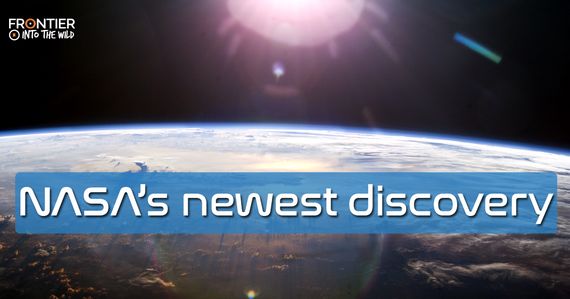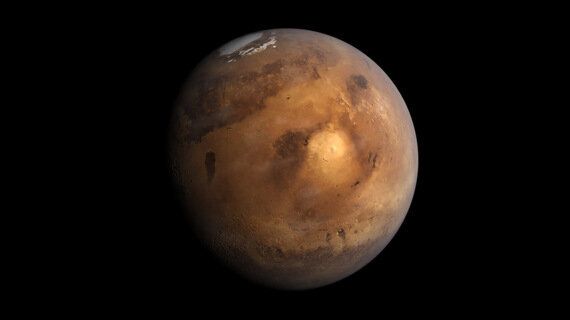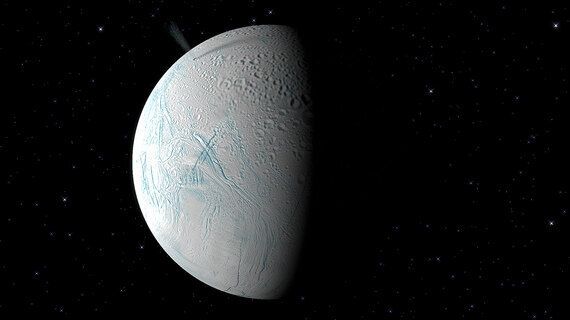
Earth is a world composed of water but we have now just discovered that we have ocean worlds all around us. Some which could possibly harbour life. So what is it about water that is so life giving?
The water on Earth is able to remain on the planet due to a magnetic field acting as a shield from the solar wind. Without this magnetic field, our atmosphere would be stripped away. Some of the planets and moons in our solar system seem to work, or have worked, in the same way.
Which moons and planets are we talking about?
Venus in particular has been left in a terrible state. A runaway greenhouse effect which led to a build-up of carbon dioxide is thought to have evaporated what was once a world of oceans. Mars is also thought to once have had oceans on its surface but its own global magnetic field decayed, leaving its atmosphere vulnerable to erosion from solar winds.

Jupiter is orbited by three moons which are thought to contain oceans; Europa, Callisto and Ganymede. Europa is full of icebergs along its cracked surface. Scientists believe there could be double the amount of water on Europa as there is on Earth, hidden just below the crust of this moon. Water vapour plumes were noticed coming out of the cracks from this moon in both 2014 and 2016 by the Hubble based telescope. Photos of Ganymede also show signs of water. Images have provided what looks like ancient ice flows visible on its surface. Similar to Europa, Callisto too appears to contain an ocean of salt water under its own frozen crust.
Scientists are most excited about their newest discoveries orbiting the satellites of Saturn.
What makes Saturn so special?
Well, Saturn has 62 moons and out of them all, one appears to have all the ingredients for life. Back in 2005, NASA's Cassini spacecraft discovered Saturn's moon, Enceladus, visibly puffing out plumes of water vapour. Along with this, it also appeared to be releasing organic compounds from its tiger stripes known as fishers. Nano-silica grains and molecular hydrogen have since then been discovered which suggests that there is moving hot water on this moon. Molecular hydrogen and vapour plumes occur when hot rocks come together and meet with ocean water to create hydrothermal vents. Hydrothermal vents are also present on Earth and are thought to be the reason that life began on our planet.
The chemical reaction known as methanogenesis is believed to occur under Enceladus' hydrothermal vents. This is the formation of methane caused by bacteria or other living organisms known as methanogens. Methanogenesis is crucial for the development of microbial life as the methane creates an energy source for living organisms. Certain types of bacteria are able to use methane to create and use their own oxygen in order to survive without plants. Essentially, they breathe anaerobically rather than aerobically. Hunter Waite of the Southwest Research Institute in San Antonio and lead author of the Enceladus study says: "Although we can't detect life, we've found that there's a food source there for it. It would be like a candy store for microbes'.

For there to be life, there must primarily be a source of energy, liquid water and the correct chemical elements such as carbon, hydrogen, nitrogen, oxygen, phosphorus and sulphur. So far, Enceladus has shown almost all of these ingredients for habitability but Cassini has not finished its mission yet. There is still time to uncover more. Scientists strongly believe phosphorus and sulphur will be discovered within its oceans. This is because Enceladus is thought to be chemically similar to meteorites which contain the two elements.
"This is the first time that we have found so many of the essential components for life in one place beyond our own planet and it is one of the least expected places, too: a small moon far from the sun," says Mark Perry, Planetary Scientist from the Johns Hopkins University Applied Physics Laboratory in Maryland and co-author of the study. "This remarkable discovery gives us great hope that we will eventually find life somewhere besides Earth."
Here's a video from NASA showing the final steps in Cassini's mission:
"It's inspiring, adventurous and romantic... a fitting end to this thrilling story of discovery," - NASA
Cassini will continue to uncover the secrets of Saturn's moons and the mysteries of outer space until September 2017 when its 20-year mission comes to an end.
By Simone Kelly - Online Journalism Intern
Frontier runs conservation, development, teaching and adventure travel projects in over 50 countries worldwide - so join us and explore the world!
